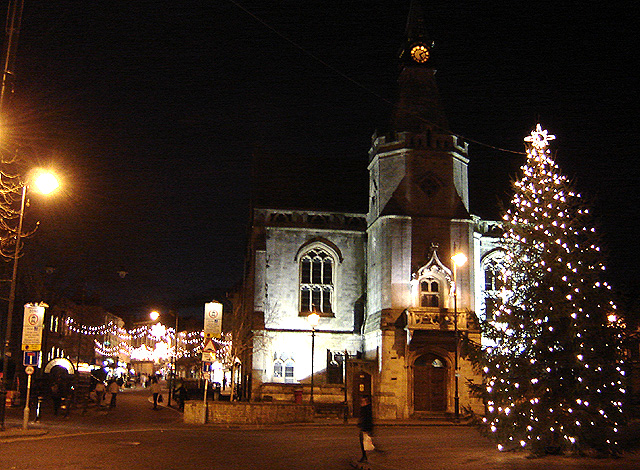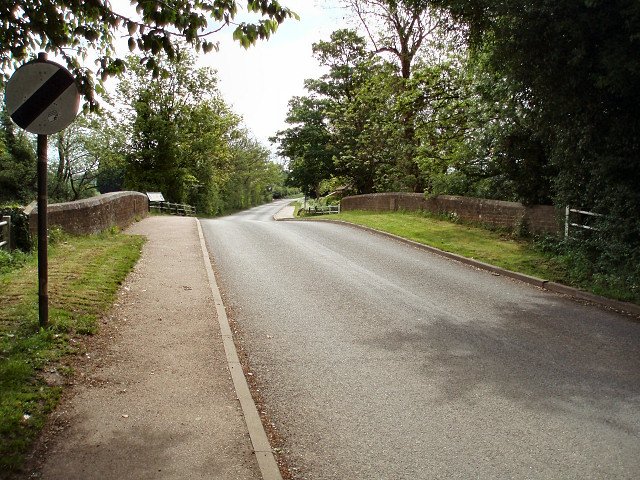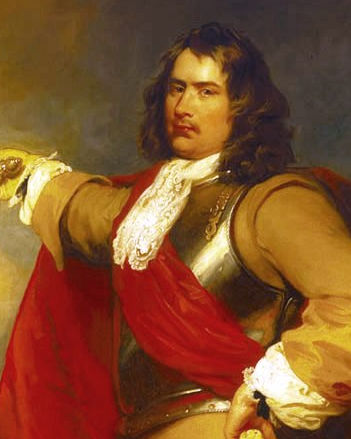|
Battle Of Newbury (1644)
The Second Battle of Newbury was a battle of the First English Civil War fought on 27 October 1644, in Speen, adjoining Newbury in Berkshire. The battle was fought close to the site of the First Battle of Newbury, which took place in late September the previous year. The combined armies of Parliament inflicted a tactical defeat on the Royalists, but failed to gain any strategic advantage. Background In the early months of 1644, the Parliamentarians had won victories at Cheriton in the south of England and Nantwich in the northwest. Also, they had secured the allegiance of the Scottish Covenanters, who sent an army into the north east. These developments both distracted the Royalists and weakened their forces around Oxford, King Charles's wartime capital. Early in June, the Parliamentarian armies of the Earl of Essex and Sir William Waller threatened to surround Oxford. King Charles made a night march to escape to Worcester. He was still in danger but on 6 June, Es ... [...More Info...] [...Related Items...] OR: [Wikipedia] [Google] [Baidu] |
Donnington Grove Country Club
Donnington Grove is a Strawberry Hill Gothic mansion, now a hotel and country club, and associated Golf Course at Donnington in the civil parish of Shaw-cum-Donnington, near Newbury, in the English county of Berkshire. It is overlooked by Donnington Castle. History Donnington Grove was built in 1763 for James Pettit Andrews the half-brother of the lord of Shaw Manor. The Grove was built in "Strawberry Hill Gothic" a style named after the house created for Horace Walpole at Strawberry Hill in London. Records show that Donnington House was expensive to construct and costly to maintain. Twenty years later Andrews sold the property to William Brummell who was responsible for turning Donnington Grove into the landscape it is today and here that his son, Beau Brummell, grew up. By the time Brummell died, the estate covered , the house and stables had been extended and entrance lodges erected. William Brummell died in 1794 and left the estate to be divided amongst his children. After t ... [...More Info...] [...Related Items...] OR: [Wikipedia] [Google] [Baidu] |
Covenanter
Covenanters ( gd, Cùmhnantaich) were members of a 17th-century Scottish religious and political movement, who supported a Presbyterian Church of Scotland, and the primacy of its leaders in religious affairs. The name is derived from ''Covenant'', a biblical term for a bond or agreement with God. The origins of the movement lay in disputes with James VI, and his son Charles I over church structure and doctrine. In 1638, thousands of Scots signed the National Covenant, pledging to resist changes imposed by Charles on the kirk; following victory in the 1639 and 1640 Bishops' Wars, the Covenanters took control of Scotland and the 1643 Solemn League and Covenant brought them into the First English Civil War on the side of Parliament. Following his defeat in May 1646 Charles I surrendered to the Scots Covenanters, rather than Parliament. By doing so, he hoped to exploit divisions between Presbyterians, and English Independents. As a result, the Scots supported Charles in the 16 ... [...More Info...] [...Related Items...] OR: [Wikipedia] [Google] [Baidu] |
Banbury
Banbury is a historic market town on the River Cherwell in Oxfordshire, South East England. It had a population of 54,335 at the 2021 Census. Banbury is a significant commercial and retail centre for the surrounding area of north Oxfordshire and southern parts of Warwickshire and Northamptonshire which are predominantly rural. Banbury's main industries are motorsport, car components, electrical goods, plastics, food processing and printing. Banbury is home to the world's largest coffee-processing facility (Jacobs Douwe Egberts), built in 1964. The town is famed for Banbury cakes, a spiced sweet pastry dish. Banbury is located north-west of London, south-east of Birmingham, south-east of Coventry and north-west of Oxford. History Toponymy The name Banbury may derive from "Banna", a Saxon chieftain said to have built a stockade there in the 6th century (or possibly a byname from ang, bana meaning ''felon'', ''murderer''), and / meaning ''settlement''. In Anglo Saxon i ... [...More Info...] [...Related Items...] OR: [Wikipedia] [Google] [Baidu] |
Plymouth
Plymouth () is a port city and unitary authority in South West England. It is located on the south coast of Devon, approximately south-west of Exeter and south-west of London. It is bordered by Cornwall to the west and south-west. Plymouth's early history extends to the Bronze Age when a first settlement emerged at Mount Batten. This settlement continued as a trading post for the Roman Empire, until it was surpassed by the more prosperous village of Sutton founded in the ninth century, now called Plymouth. In 1588, an English fleet based in Plymouth intercepted and defeated the Spanish Armada. In 1620, the Pilgrim Fathers departed Plymouth for the New World and established Plymouth Colony, the second English settlement in what is now the United States of America. During the English Civil War, the town was held by the Roundhead, Parliamentarians and was besieged between 1642 and 1646. Throughout the Industrial Revolution, Plymouth grew as a commercial shipping port, handling ... [...More Info...] [...Related Items...] OR: [Wikipedia] [Google] [Baidu] |
Portsmouth
Portsmouth ( ) is a port and city in the ceremonial county of Hampshire in southern England. The city of Portsmouth has been a unitary authority since 1 April 1997 and is administered by Portsmouth City Council. Portsmouth is the most densely populated city in the United Kingdom, with a population last recorded at 208,100. Portsmouth is located south-west of London and south-east of Southampton. Portsmouth is mostly located on Portsea Island; the only English city not on the mainland of Great Britain. Portsea Island has the third highest population in the British Isles after the islands of Great Britain and Ireland. Portsmouth also forms part of the regional South Hampshire conurbation, which includes the city of Southampton and the boroughs of Eastleigh, Fareham, Gosport, Havant and Waterlooville. Portsmouth is one of the world's best known ports, its history can be traced to Roman times and has been a significant Royal Navy dockyard and base for centuries. Portsm ... [...More Info...] [...Related Items...] OR: [Wikipedia] [Google] [Baidu] |
Battle Of Lostwithiel
The Battle of Lostwithiel took place over a 13-day period from 21 August to 2 September 1644, around the town of Lostwithiel and along the River Fowey valley in Cornwall during the First English Civil War. A Royalist army led by Charles I of England defeated a Parliamentarian force commanded by the Earl of Essex. Although Essex and most of the cavalry escaped, between 5,000 and 6,000 Parliamentarian infantry were forced to surrender. Since the Royalists were unable to feed so many, they were given a pass back to their own territory, arriving in Southampton a month later having lost nearly half their number to disease and desertion. Considered one of the worst defeats suffered by Parliament over the course of the Wars of the Three Kingdoms, it secured South West England for the Royalists until early 1646. Background During April and May 1644, Parliamentarian commanders Sir William Waller and the Earl of Essex combined their armies and carried out a campaign against King Charle ... [...More Info...] [...Related Items...] OR: [Wikipedia] [Google] [Baidu] |
Battle Of Cropredy Bridge
The Battle of Cropredy Bridge was fought on 29 June 1644 near Banbury, Oxfordshire during the First English Civil War. In the engagement, Sir William Waller and the Parliamentarian army failed to capture King Charles. The site was placed on the Register of Historic Battlefields maintained by Historic England in 1995. Background In the early part of 1644, the Royalists suffered several setbacks. Two field armies were defeated at Nantwich and Cheriton, and a Scottish Covenanter army invaded the north of England, driving the Royalists to York, where they were besieged. King Charles held a council of war in Oxford, his wartime capital, between 25 April and 5 May. It was agreed that while the King remained on the defensive in Oxford, protected by several outlying fortified towns, his nephew Prince Rupert of the Rhine (the famous Royalist field commander) would proceed to retrieve the situation in the north. The military command of the forces that remained with King Charles ... [...More Info...] [...Related Items...] OR: [Wikipedia] [Google] [Baidu] |
Cornwall
Cornwall (; kw, Kernow ) is a historic county and ceremonial county in South West England. It is recognised as one of the Celtic nations, and is the homeland of the Cornish people. Cornwall is bordered to the north and west by the Atlantic Ocean, to the south by the English Channel, and to the east by the county of Devon, with the River Tamar forming the border between them. Cornwall forms the westernmost part of the South West Peninsula of the island of Great Britain. The southwesternmost point is Land's End and the southernmost Lizard Point. Cornwall has a population of and an area of . The county has been administered since 2009 by the unitary authority, Cornwall Council. The ceremonial county of Cornwall also includes the Isles of Scilly, which are administered separately. The administrative centre of Cornwall is Truro, its only city. Cornwall was formerly a Brythonic kingdom and subsequently a royal duchy. It is the cultural and ethnic origin of the Cornish dias ... [...More Info...] [...Related Items...] OR: [Wikipedia] [Google] [Baidu] |
Devon
Devon ( , historically known as Devonshire , ) is a ceremonial and non-metropolitan county in South West England. The most populous settlement in Devon is the city of Plymouth, followed by Devon's county town, the city of Exeter. Devon is a coastal county with cliffs and sandy beaches. Home to the largest open space in southern England, Dartmoor (), the county is predominately rural and has a relatively low population density for an English county. The county is bordered by Somerset to the north east, Dorset to the east, and Cornwall to the west. The county is split into the non-metropolitan districts of East Devon, Mid Devon, North Devon, South Hams, Teignbridge, Torridge, West Devon, Exeter, and the unitary authority areas of Plymouth, and Torbay. Combined as a ceremonial county, Devon's area is and its population is about 1.2 million. Devon derives its name from Dumnonia (the shift from ''m'' to ''v'' is a typical Celtic consonant shift). During the Briti ... [...More Info...] [...Related Items...] OR: [Wikipedia] [Google] [Baidu] |
Siege Of Lyme Regis
The siege of Lyme Regis was an eight-week blockade during the First English Civil War. The port of Lyme Regis, in Dorset, was considered to be of strategic importance because of its position along the main shipping route between Bristol and the English Channel. Thomas Ceeley and Robert Blake commanded the town's Parliamentarian defences during the siege, which was laid by Prince Maurice between 20 April and 16 June 1644. At the start of the war, the people of Lyme Regis were predominantly Puritans, and the town was claimed by a pair of local members of parliament and garrisoned for the Parliamentarians. Most of the rest Dorset, and the south-west of England in general, was under the control of the Royalists. The town, which only had sea-facing defences, feared an attack and Blake was charged with its fortification. He established a series of earthen defences featuring four forts which completely surrounded the town. King Charles I ordered the capture of the town in early 16 ... [...More Info...] [...Related Items...] OR: [Wikipedia] [Google] [Baidu] |
Lyme Regis
Lyme Regis is a town in west Dorset, England, west of Dorchester and east of Exeter. Sometimes dubbed the "Pearl of Dorset", it lies by the English Channel at the Dorset–Devon border. It has noted fossils in cliffs and beaches on the Heritage or Jurassic Coast, a World Heritage Site. The harbour wall, known as The Cobb, appears in Jane Austen's novel ''Persuasion'', the John Fowles novel ''The French Lieutenant's Woman'' and the 1981 film of that name, partly shot in the town. A former mayor and MP was Admiral Sir George Somers, who founded the English colonial settlement of Somers Isles, now Bermuda, where Lyme Regis is twinned with St George's. In July 2015, Lyme Regis joined Jamestown, Virginia in a Historic Atlantic Triangle with St George's. The 2011 Census gave the urban area a population of 4,712, estimated at 4,805 in 2019. History In Saxon times, the abbots of Sherborne Abbey had salt-boiling rights on land adjacent to the River Lym, and the abbey once owned par ... [...More Info...] [...Related Items...] OR: [Wikipedia] [Google] [Baidu] |
West Country
The West Country (occasionally Westcountry) is a loosely defined area of South West England, usually taken to include all, some, or parts of the counties of Cornwall, Devon, Dorset, Somerset, Bristol, and, less commonly, Wiltshire, Gloucestershire and Herefordshire. "Which counties make up the West Country?", ''YouGov.co.uk'', 23 October 2019 Retrieved 22 June 2021 The West Country has a distinctive regional English dialect and accent, and is also home to the . Extent ...
|



2009.jpg)

